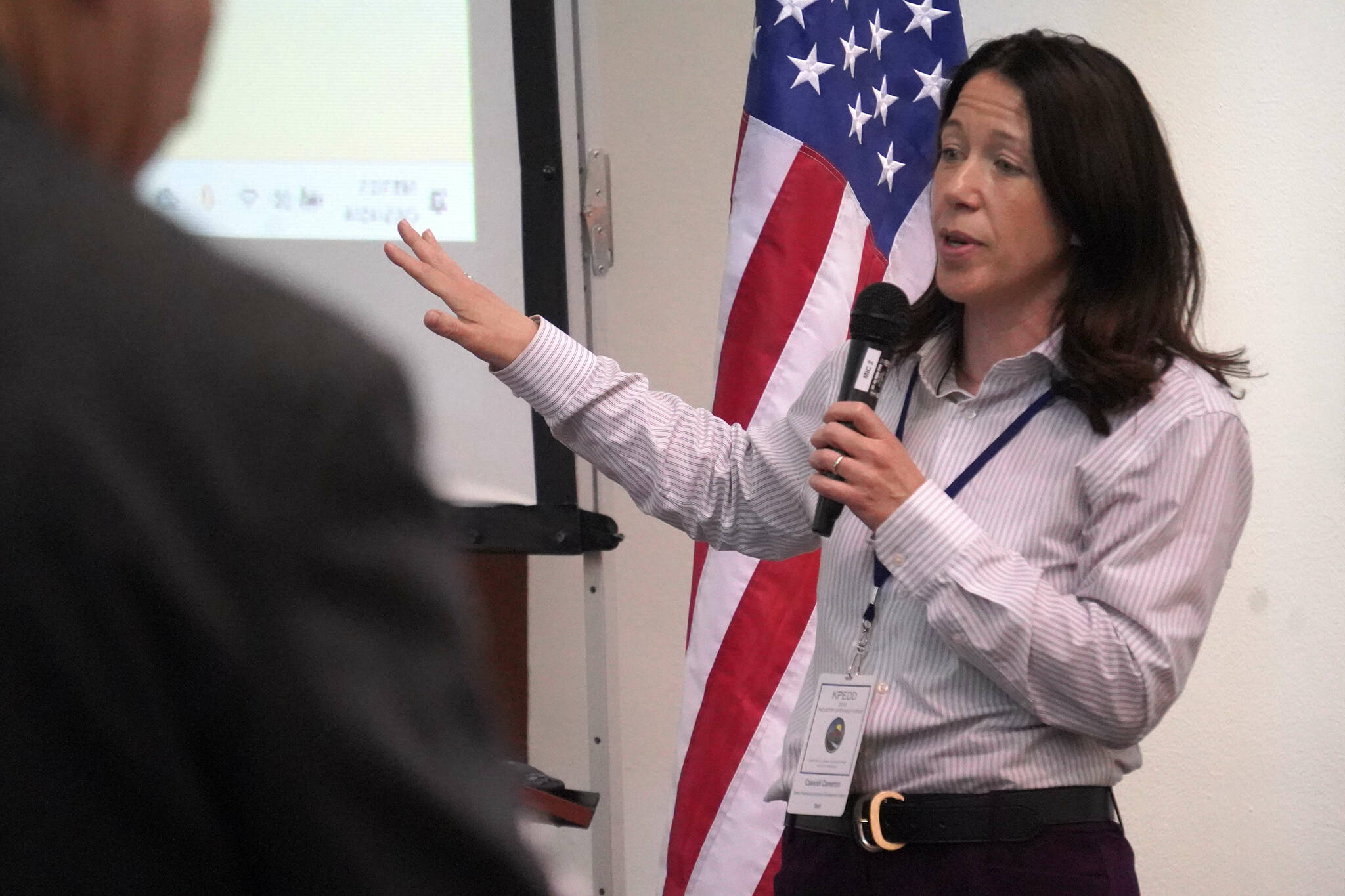At the annual Industry Outlook Forum, hosted by the Kenai Peninsula Economic Development District on Thursday in the Kenai Chamber of Commerce and Visitor Center, economists shared their appraisal of the current state of the Kenai Peninsula Borough economy — before KPEDD rolled out the details of its effort to plan for the future.
Andy Wink, an economist and research analyst from Wink Research and Consulting, delivered a panel during the forum titled “State of the KPB Economy.” A key source of data, he said, is Alaska Permanent Fund dividend registrations, which provide detailed population demographics and can be matched to employment records.
“There’s a lot of reasons for optimism,” he said. “There’s also a few things, I think, to keep an eye on.”
The Kenai Peninsula Borough, he said, is seeing population and job growth greater than the state average, as well as housing costs below the state average. The annual earnings per job in the local borough are below the state average and below the average in Anchorage, though they are higher than the Matanuska-Susitna Borough.
Like the rest of the state, Wink said the Kenai Peninsula Borough has grown older, on average, since 1990. The local borough is growing older more quickly than the rest of the state, though — the KPB’s median age has increased by nearly 13 years in that time, while the state median age has increased by around eight. The KPB also has significantly fewer residents in their 20s than Anchorage, the Mat-Su, and the state average.
Where most economic indicators suggest fairly good health, Wink said that housing appears to be a cause for concern.
“The data suggests that the market is probably tighter than most all other places in Alaska,” he said.
That’s good, from one perspective. People want to come to the Kenai Peninsula Borough and there isn’t enough space for them all. There are challenges in areas like Homer and Seward, though, where the contracting housing market is a contributing factor to an aging population and declining inward migration.
Some key industries are expected to see growth in the coming years, Wink said, like oil and gas. Tourism could face challenges based on external tumult but presently is projected to be stable in the coming year. The seafood industry faces significant challenges and declines based on troubled salmon fisheries locally and statewide, as well as by rising costs of doing business.
Ultimately, Wink said, the borough has several reasons to be excited about its future, though there are challenges on the horizon.
“I’m very optimistic,” he said. “There’s some growing pains that happen anytime you have an economy that is growing as strong as it is here. That lump in the carpet could be housing, or it could be something else. It’s good problems to have.”
Immediately following Wink’s presentation, Dr. Alyssa Rodrigues of Economic Development Consultants described the launch of development for KPEDD’s next comprehensive economic development strategy. That plan, the CEDS, operates in five-year cycles — and the last one that ends this year targeted telecommunications, workforce, infrastructure, business climate and regional partnerships.
“It was really about resilience and making the Kenai Peninsula a thriving place to be,” she said.
To that end, KPEDD in keeping with the last CEDS was part of the broadband task force; identified workforce needs for housing, child care and transit solutions; and aided in development of new small businesses, among other things.
When Rodrigues asked forum attendees to describe the challenges facing the borough in the next five years, housing was repeatedly at the top of the stack. That was in response to needs of the borough to bring in new families, support its aging population, and develop key industries. Submissions, collated and displayed during the presentation, also described child care, the costs of living, education funding and isolation as problems to tackle.
“Housing really is the theme of the day,” she said.
KPEDD will solicit input on a new CEDS for the next five years in many borough communities, including in Soldotna on May 28, Homer on May 29, and Seldovia in August. More information can be found at kpedd.org/ceds.
“This is a plan that everyone is putting together that’s very alive and that involves everybody rowing in the same direction,” Rodrigues said. “This is all about getting input so that we are all excited about putting in that continuous, intentional effort because we all want to get to where we’ve decided to go together.”
Reach reporter Jake Dye at jacob.dye@peninsulaclarion.com.


